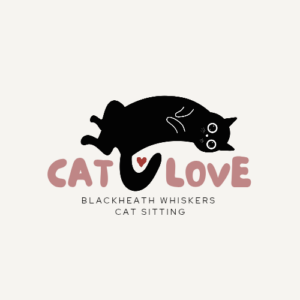The Psychology of Cat Communication: What Meows, Tail Movements, and Body Language Really Mean

As a cat sitter at Blackheath Whiskers Cat Sitting, I’ve had the privilege of caring for countless feline personalities. And while every cat is different, one thing they all have in common is their unique way of communicating. Cats may not speak our language, but if you know what to look (and listen) for, they’re constantly telling you how they feel.
I’ve spent countless hours observing cats, learning to decode their subtle signals, responding to their cues, and building trust. Whether it’s a timid rescue cat taking her first steps toward trust or an attention-seeking tabby loudly voicing his opinions, I’ve learned that understanding cat communication is the key to making them feel comfortable, safe, and loved.
In this post, I’ll share what I’ve learned about cat communication—focusing on their meows, tail movements, and body language. Understanding these signals not only strengthens the bond between you and your cat but also helps you identify their emotional state and spot any signs of discomfort or stress.
Why Understanding Cat Communication Matters
Cats can be subtle communicators. Unlike dogs, who often wear their emotions on their sleeves (or paws), cats prefer to use a combination of vocalizations, body language, and scent marking to get their point across.
When I’m cat sitting, understanding these signals allows me to adjust my approach and make the cat feel more at ease. Some cats are eager to engage right away, while others need time to warm up. Knowing whether a cat is inviting interaction or signaling that they need space is essential for building trust and ensuring their well-being.
At Blackheath Whiskers Cat Sitting, we take the time to get to know your cat’s unique signals. Our family-run business, led by a mother and son team, prides itself on creating a stress-free experience for every cat we care for.
The Language of Meows: What Your Cat is Saying
Cats don’t meow at each other in the wild—meowing is something they’ve developed specifically to communicate with humans. And just like people, some cats are more talkative than others. Over the years, I’ve encountered everything from quiet, reserved cats to chatterboxes who have a lot to say!
1. The Classic “Meow”
This is the most common sound, and it can mean a variety of things depending on the context. A short, mid-pitched meow is often a simple greeting or acknowledgment. When I enter a client’s home and hear a quick meow, I know the cat is saying, “Oh, you’re here!”
2. The Insistent Meow (Demand for Attention or Food)
When a cat meows repeatedly, often louder and with more urgency, they’re usually asking for something. This is the “feed me now” or “pay attention to me” meow. I’ve had some cats follow me around, vocalizing persistently until I either fill their bowl or engage in playtime.
3. The Chirp or Trill (Excitement or Anticipation)
A chirping or trilling sound is a happy, excited noise. Cats often make this sound when they spot something interesting, like a bird outside the window, or when they’re greeting someone they trust. It’s a sign of anticipation or curiosity.
4. The Long, Drawn-Out Meow (Complaint or Protest)
This dramatic, extended meow usually signals displeasure. I often hear it when a cat is expressing frustration—whether it’s because their food bowl isn’t filled fast enough or because they’re not ready for me to leave after a visit.
5. The Yowl or Howl (Distress or Discomfort)
A loud, drawn-out yowl is a sign that something is wrong. Cats may howl if they’re in pain, feeling disoriented, or experiencing anxiety. I pay close attention to these vocalizations, especially when caring for older cats who may be experiencing cognitive decline or discomfort.
Tail Movements: Your Cat’s Emotional Barometer
A cat’s tail is one of the most expressive parts of its body. I’ve learned that by observing tail movements closely, I can gauge a cat’s mood and anticipate their next move.
1. Tail Held High (Confidence and Happiness)
When a cat approaches me with its tail held high, I know they’re feeling confident and friendly. This posture often signals that they’re open to interaction and trust me.
2. Tail Puffed Up (Fear or Aggression)
A puffed-up tail is a clear sign that a cat is scared or feeling threatened. I’ve encountered this posture when cats are startled or feel cornered. In these situations, I give the cat space to calm down before attempting any interaction.
3. Tail Flicking or Lashing (Irritation or Agitation)
A quick flick or lash of the tail usually means a cat is irritated or overstimulated. I’ve learned that when a cat’s tail starts moving like this during a petting session, it’s best to stop and give them space before they escalate to swatting or biting.
4. Tail Tucked Between Legs (Fear or Submission)
When a cat tucks its tail close to its body, it’s a sign of fear, anxiety, or submission. Cats displaying this posture often prefer to be left alone, and I always respect that boundary when caring for a nervous or anxious cat.
Body Language: The Subtle Signs
While vocalizations and tail movements are important, a cat’s overall body language provides even deeper insights into their emotional state. Paying attention to posture, ear position, and eye contact helps me understand how a cat is feeling.
1. Relaxed Body and Soft Eyes (Contentment and Trust)
When a cat is stretched out, with soft, half-closed eyes, they’re in a state of total relaxation. I often see this when a cat feels completely at ease during my visits. It’s a sign that they trust me and feel safe in their environment.
2. Ears Forward (Curiosity and Interest)
Cats with ears perked forward are usually curious and alert. This posture suggests they’re interested in what’s happening around them.
3. Ears Turned Back or Flattened (Discomfort or Fear)
Flattened ears are a sign of fear, anxiety, or aggression. I pay close attention when a cat’s ears go back, as it usually means they’re feeling stressed and need space.
4. Dilated Pupils (Excitement or Fear)
Wide, dilated pupils can mean different things depending on the context. When a cat is playing or feeling excited, their pupils may dilate. However, dilated pupils can also be a sign of fear or overstimulation.
5. Slow Blinking (Affection and Trust)
One of my favorite signals is the slow blink. When a cat looks at you and slowly blinks, it’s a sign of trust and affection. I often return the gesture to let the cat know that I’m friendly and non-threatening.
Why Choose Blackheath Whiskers Cat Sitting for Your Cat Sitting Needs?
At Blackheath Whiskers Cat Sitting, we do more than just care for cats—we understand them. Our small, family-run business is led by a dedicated mother and son team who share a deep love and respect for cats. We’ve built our reputation on trust, reliability, and an unwavering commitment to feline well-being.
Why Our Clients Trust Us:
🐱Personalized Care: We tailor our approach to suit your cat’s unique personality and preferences, ensuring they feel safe and happy while you’re away.
🐱Experience with All Temperaments: From shy rescues to playful kittens, we know how to read and respond to every cat’s unique cues.
🐱Eco-Friendly and Sustainable: We’re committed to being an eco-friendly business by using sustainable products and minimizing our environmental footprint.
🐱Giving Back to Cats in Need: We proudly donate 50p to Cats Protection for every visit we make, supporting a cause close to our hearts.
Why Our Eco-Friendly Commitment Matters
We believe that taking care of cats should also mean taking care of the planet. That’s why we prioritize eco-friendly practices in everything we do. From using biodegradable litter bags to choosing environmentally friendly cleaning products, we’re mindful of reducing our impact.
Our commitment to sustainability doesn’t stop there. We also support Cats Protection by donating 50p for every visit. This allows us to give back to cats in need while providing the highest level of care for the cats entrusted to us.
Get in Touch with Blackheath Whiskers Cat Sitting
If you’re looking for experienced, attentive, and compassionate cat sitters who truly understand your cat’s language, look no further than Blackheath Whiskers Cat Sitting.
Contact Us:
Email: blackheathwhiskers@gmail.com
Website: blackheathwhiskers.co.uk
Let us take care of your beloved feline while giving you the peace of mind that they’re in loving, expert hands. Schedule a consultation today and experience the Blackheath Whiskers Cat Sitting difference!
